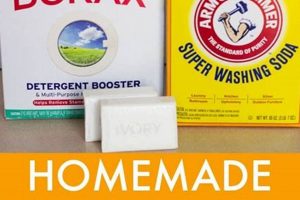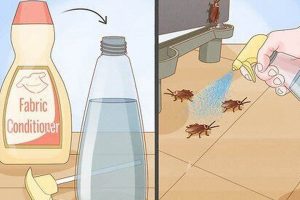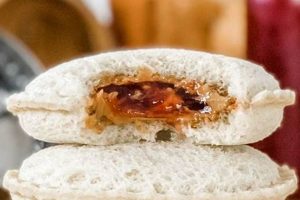A self-assembled apparatus utilizing a heated resistance wire to precisely cut expanded polystyrene (EPS) foam, extruded polystyrene (XPS) foam, and similar materials represents a cost-effective solution for various crafting and prototyping needs. These devices commonly employ a low-voltage power supply, a tensioning mechanism for the wire, and a frame to maintain stability and control during operation. Examples include creating architectural models, artistic sculptures, or custom packaging inserts.
The ability to fabricate complex shapes and intricate designs with precision and minimal material waste constitutes a significant advantage. The relative simplicity of construction allows for customization to specific project requirements, fostering innovation and resourcefulness. Historically, the adoption of such tools has accelerated due to increased accessibility to electronic components and readily available online instructions.
The subsequent sections will delve into the essential components, construction techniques, safety precautions, and potential applications relevant to building and utilizing a heated-wire foam cutting apparatus.
Tips for Optimal Heated-Wire Foam Cutting Apparatus Performance
The following guidelines aim to enhance the precision, safety, and longevity of self-constructed heated-wire foam cutting apparatuses.
Tip 1: Wire Selection: Utilize resistance wire, such as nichrome, with a diameter appropriate for the power supply. Thinner wires heat faster but are more prone to breakage; thicker wires require more power to achieve the desired temperature. Experimentation is required to determine ideal wire gauge.
Tip 2: Power Supply Regulation: Implement a variable voltage power supply to precisely control wire temperature. Excessive heat results in uneven cuts and noxious fumes, while insufficient heat leads to snagging and inaccurate profiles. Gradual adjustment is recommended.
Tip 3: Tensioning Mechanism: Incorporate a spring or weight-based tensioning system to maintain consistent wire tension throughout operation. Temperature fluctuations cause wire expansion and contraction, which can introduce inconsistencies if not properly managed.
Tip 4: Frame Rigidity: Construct a rigid frame using durable materials such as wood or metal. Frame flexure negatively impacts cutting accuracy, particularly when working with larger foam blocks.
Tip 5: Ventilation and Fume Extraction: Operate the apparatus in a well-ventilated area or utilize a fume extraction system. The fumes produced during foam cutting can be irritating and potentially harmful with prolonged exposure.
Tip 6: Cutting Speed and Technique: Maintain a slow and consistent cutting speed. Rushing the process introduces imperfections and increases the risk of wire breakage. Experiment with different speeds to determine the optimal rate for various foam densities.
Tip 7: Wire Maintenance: Regularly clean the wire to remove foam residue. Accumulation of debris hinders heat transfer and reduces cutting efficiency. A soft cloth or brush can be used for cleaning.
Effective implementation of these techniques contributes to improved cutting quality, reduced material waste, and enhanced user safety.
These tips provide a foundation for successful utilization. The next step involves exploring common projects and applications.
1. Wire Temperature
Wire temperature is a critical determinant of functionality in a self-assembled heated-wire foam cutting apparatus. The apparatus operates on the principle of thermal ablation, whereby a heated resistance wire melts its way through foam. If the wire temperature is too low, it will drag and tear the foam, producing a rough, uneven cut. Conversely, excessively high temperatures can cause the foam to melt too rapidly, leading to uncontrolled cutting and potentially producing noxious fumes. As an example, an architectural model requiring precise edges will necessitate careful temperature calibration to avoid deformation of delicate features.
Achieving and maintaining optimal wire temperature relies on several factors, including the resistance of the wire itself, the voltage supplied by the power source, and the thermal conductivity of the foam being cut. The power source must be capable of delivering sufficient amperage to heat the wire to the necessary temperature. A variable voltage power supply allows for fine-tuning to accommodate different foam densities and cutting speeds. Furthermore, the frame design and wire tensioning mechanism must ensure consistent contact between the wire and the foam throughout the cutting process. For instance, creating cosplay armor pieces often requires intricate curves and angles, demanding precise temperature control to prevent undercutting or burning.
In summary, wire temperature constitutes a fundamental parameter governing the performance and safety of a heated-wire foam cutting tool. Accurately controlling wire temperature enables efficient, precise cuts while minimizing material waste and potential hazards. Addressing challenges like temperature fluctuations and material-specific adjustments is paramount for reliable and repeatable results in a broad spectrum of applications.
2. Frame Rigidity
Frame rigidity in a self-assembled heated-wire foam cutting apparatus directly influences cutting precision and overall stability. A non-rigid frame can flex or vibrate during operation, causing deviations in the cutting path. These deviations manifest as uneven cuts, inconsistent angles, and dimensional inaccuracies, particularly when working with large foam blocks or intricate designs. The cause is the force exerted by the tensioned cutting wire, which, if not adequately supported, deflects the frame. As an example, consider the construction of architectural models where dimensional accuracy is paramount. A flexible frame can render the model unusable due to distorted proportions.
The importance of frame rigidity extends beyond mere aesthetics; it affects the structural integrity and longevity of the apparatus. A robust frame withstands the repetitive stresses imposed by the tensioned wire and the physical manipulation of the cutting process. In contrast, a weak frame may gradually deform over time, leading to progressive degradation in performance. The construction of scaled terrain models for gaming provides another instance. Continuous use with even slight frame instability results in imprecise contours and mismatched sections.
In summary, frame rigidity is a critical, often overlooked, component of a successful heated-wire foam cutting device. It directly contributes to the accuracy, repeatability, and durability of the apparatus. Mitigating frame flexure through appropriate material selection and structural design is essential for achieving consistently high-quality results. Addressing such structural considerations minimizes operational
inaccuracies and enhances the overall utility of this device. The stability that frame rigidity provides is paramount for achieving accurate cuts and intricate designs, further broadening the applicability of this apparatus across varied creative and technical projects.
3. Power Regulation
Power regulation forms a critical link in the functionality of a self-assembled heated-wire foam cutting apparatus. Precise control over electrical power supplied to the resistance wire dictates its temperature, directly impacting the quality and efficiency of the cutting process.
- Voltage Control and Wire Temperature
The primary function of power regulation is to modulate the voltage applied to the resistance wire. Higher voltage results in increased current flow, leading to a higher wire temperature. Accurate voltage control is essential to maintain the wire temperature within an optimal range for smooth and clean cuts. For instance, cutting dense extruded polystyrene (XPS) requires a higher wire temperature than expanded polystyrene (EPS), necessitating a power supply capable of fine-grained voltage adjustments.
- Current Limiting and Wire Protection
Power regulation also incorporates current limiting features. Excessive current can overheat and potentially melt the resistance wire, resulting in equipment failure and potential hazards. A current limiter protects the wire by preventing it from exceeding its maximum current rating, thereby extending its lifespan. Implementing a circuit breaker or fuse provides an additional layer of protection against overcurrent situations.
- Power Supply Stability and Cut Consistency
A stable power supply ensures consistent wire temperature throughout the cutting process. Fluctuations in the input voltage can lead to variations in the wire temperature, resulting in inconsistent cut depths and surface finishes. A regulated power supply maintains a constant output voltage regardless of variations in the input voltage, thereby promoting uniform cutting performance. This is particularly critical when cutting intricate designs or large volumes of material.
- Types of Power Regulation Circuits
Various power regulation circuits are employed in self-assembled heated-wire foam cutting apparatuses, ranging from simple linear regulators to more sophisticated switching power supplies. Linear regulators offer simplicity and low noise but are less efficient, dissipating excess power as heat. Switching power supplies offer higher efficiency but can introduce electrical noise. The choice of power regulation circuit depends on factors such as the required voltage range, current capacity, efficiency, and noise sensitivity.
The effective integration of power regulation into a heated-wire foam cutting apparatus promotes safety, precision, and efficiency. Failure to adequately regulate power can lead to suboptimal cutting results, equipment damage, and potential hazards. Careful consideration of voltage control, current limiting, power supply stability, and the type of regulation circuit is essential for successful apparatus design and operation.
4. Tension Control
Tension control represents a foundational element in the effective operation of a self-assembled heated-wire foam cutting apparatus. The apparatus relies on a taut, heated resistance wire to melt through the foam material, achieving precise cuts. Inadequate tension results in wire sag or deflection, leading to inaccurate cutting profiles and inconsistent depths. Conversely, excessive tension can stress the wire beyond its elastic limit, causing premature breakage. For instance, creating scaled architectural models necessitates straight lines and defined angles. Insufficient wire tension would render such precision impossible, causing deviations and an unsatisfactory final product.
The relationship between wire tension and cut quality manifests in several practical ways. Consistent tension ensures uniform contact between the wire and the foam surface, promoting even melting and reducing the likelihood of snagging or tearing. This is especially crucial when working with intricate patterns or varying foam densities. Furthermore, regulated tension helps mitigate the effects of thermal expansion and contraction, which occur as the wire heats and cools. A well-designed tensioning system compensates for these changes, maintaining a stable cutting environment. In the context of hobbyist model building, where components often feature complex curves, maintaining accurate tension during cutting allows for precise shaping without deformation, a factor critical for successful assembly.
Proper tension control is achievable through various mechanical means, including spring-loaded mechanisms, weight-based systems, or adjustable turnbuckles. The selected method should allow for precise adjustment and reliable maintenance of the desired tension level. Challenges in implementing effective tension control include material fatigue, environmental temperature fluctuations, and the selection of appropriate spring constants. Understanding the underlying principles and adopting suitable design strategies is vital to ensure optimal performance and longevity of the cutting apparatus. By addressing these considerations, the user of a heated-wire foam cutter can improve the accuracy and consistency of their cuts, thereby enhancing the quality of their final product.
5. Fume Extraction
Fume extraction is a critical safety consideration when operating a self-assembled heated-wire foam cutting apparatus. The process of melting foam with a heated wire releases volatile organic compounds (VOCs) and potentially hazardous particulates into the air, necessitating adequate ventilation and fume removal.
- Composition of Fumes
Fumes produced during foam cutting primarily consist of styrene and other hydrocarbons. The specific composition varies depending on the type of foam being cut, such as expanded polystyrene (EPS) or extruded polystyrene (XPS). Prolonged exposure to these fumes can cause respiratory irritation, headaches, and other adverse health effects. A controlled laboratory experiment demonstrated that inadequate ventilation during foam cutting resulted in VOC concentrations exceeding permissible exposure limits.
- Methods of Fume Extraction
Various methods exist for extracting fumes generated by a heated-wire foam cutting apparatus. Local exhaust ventilation (LEV) systems, which capture fumes at the source using a hood or nozzle connected to a fan and filter, are highly effective. Alternatively, a well-ventilated workspace with open windows and cross-ventilation can reduce fume concentration, although this method is less reliable. Enclosing the cutting apparatus within a ventilated enclosure provides another option, effectively containing and removing fumes before they can escape into the surrounding environment.
- Filtration Technologies
Filtration systems employed in fume extraction devices commonly incorporate activated carbon filters, HEPA filters, or a combination of both. Activated carbon filters adsorb VOCs, while HEPA filters capture part
iculate matter. The effectiveness of filtration depends on the filter type, air flow rate, and frequency of filter replacement. Regular maintenance and filter replacement are essential to ensure optimal performance and prevent the release of contaminants back into the air. - Health and Safety Regulations
Occupational safety and health regulations in many jurisdictions mandate the implementation of fume extraction systems in workplaces where hazardous fumes are generated. Compliance with these regulations is essential to protect the health and safety of workers. Even in non-commercial settings, such as hobbyist workshops, the principles of fume extraction remain paramount to minimize potential health risks. Ignoring these guidelines may lead to severe health problems.
Effective fume extraction is an indispensable aspect of operating a self-assembled heated-wire foam cutting apparatus. Proper fume management mitigates health risks associated with exposure to VOCs and particulates, creating a safer and more comfortable working environment. Implementation of appropriate ventilation and filtration systems promotes responsible operation and ensures adherence to safety standards. Ignoring this key feature may result in detrimental health outcomes and thus deserves utmost consideration during the design and use of such apparatuses.
6. Cutting Speed
In the context of a self-assembled heated-wire foam cutting apparatus, cutting speed profoundly influences the quality and efficiency of the process. Cutting speed refers to the rate at which the heated wire traverses the foam material. An inappropriate speed directly impacts the resulting cut surface. Excessive speed frequently results in tearing or dragging of the foam, leaving a rough and uneven edge. Conversely, insufficient speed can lead to excessive melting and potential deformation of the surrounding material, in addition to prolonged exposure to potentially harmful fumes. For instance, if one attempts to cut a complex curve in a dense foam at too rapid a pace, the wire may skip or gouge, ruining the intended shape. Accurate cutting speed, therefore, constitutes a crucial parameter in achieving the desired outcome.
The selection of optimal cutting speed depends on several interrelated factors, including the type and density of the foam, the temperature of the wire, and the design of the cutting apparatus. Different types of foam possess varying melting points and thermal conductivities, necessitating adjustments to the cutting speed to compensate. Softer, less dense foams typically require lower speeds to prevent tearing, while denser foams may demand higher speeds to ensure efficient melting. Moreover, the wire temperature, which is determined by the power supplied to the apparatus, must be carefully calibrated in conjunction with the cutting speed. Practical applications, such as crafting intricate architectural models, showcase the significance of finely tuning the cutting speed and wire temperature for accurate and clean cuts. Precision in cutting speed contributes to improved accuracy of the angles and curves, further enhancing the model’s overall quality.
Therefore, control over cutting speed presents a significant determinant in the successful operation of a heated-wire foam cutting apparatus. Choosing appropriate speed relies on an understanding of material properties, apparatus capabilities, and desired outcomes. Overcoming challenges associated with speed control, such as inconsistent manual feed rates, can lead to more precise and efficient foam cutting, ultimately enhancing project outcomes and minimizing material waste. Mastery of cutting speed is necessary to achieve successful and repeatable results in various creative and technical endeavors using such apparatuses.
Frequently Asked Questions
The following addresses common inquiries regarding the construction and utilization of self-assembled heated-wire foam cutting apparatuses.
Question 1: What types of resistance wire are suitable for use in a heated-wire foam cutting apparatus?
Nichrome wire is commonly employed due to its high resistance and ability to withstand high temperatures. Kanthal wire represents another suitable option, offering similar properties. The optimal wire gauge depends on the power supply and desired cutting temperature.
Question 2: What safety precautions are necessary when operating a do-it-yourself heated-wire foam cutter?
Adequate ventilation or fume extraction is paramount to mitigate inhalation of potentially hazardous fumes. Eye protection is recommended to shield against debris. The apparatus must be operated on a stable, non-flammable surface, and users must avoid direct contact with the heated wire.
Question 3: How does wire tension affect the quality of cuts produced by a heated-wire foam cutter?
Proper wire tension is essential for achieving clean and accurate cuts. Insufficient tension results in wire sag, leading to uneven cuts. Excessive tension increases the risk of wire breakage. A tensioning mechanism, such as a spring or weight, is recommended to maintain consistent tension.
Question 4: What is the optimal wire temperature for cutting different types of foam?
The ideal wire temperature varies depending on the foam density and composition. Expanded polystyrene (EPS) typically requires a lower temperature than extruded polystyrene (XPS). Experimentation is necessary to determine the optimal temperature for specific materials. A variable voltage power supply facilitates temperature adjustments.
Question 5: How can frame rigidity be improved in a self-built heated-wire foam cutter?
Utilizing rigid materials, such as wood or metal, for the frame construction enhances stability. Reinforcing joints and minimizing unsupported spans reduces flexure. A stable frame minimizes vibrations and deviations, resulting in more precise cuts.
Question 6: What is the lifespan of a typical resistance wire used in a foam cutting apparatus?
The lifespan of the resistance wire depends on factors such as operating temperature, current, and frequency of use. Regular cleaning of the wire to remove foam residue can extend its lifespan. Overheating and excessive tension contribute to premature failure. Replacement of the wire is necessary when it becomes brittle or develops significant sagging.
These FAQs provide essential information for individuals engaged in constructing and operating heated-wire foam cutting apparatuses. Adherence to safety guidelines and best practices is crucial for ensuring reliable and effective performance.
The following section explores applications of heated-wire foam cutting in various creative and technical fields.
Conclusion
This exploration has detailed fundamental aspects of a diy hot wire foam cutter. Key elements include power regulation, wire tension, frame rigidity, fume extraction, and cutting speed. Each factor significantly influences apparatus performance and safety. Precise control and careful calibration of these components are necessary for achieving optimal results in various foam cutting applications.
Effective implementation of the discussed techniques requires diligence. Continued advancements in materials and control systems may further enhance the capabilities of these tools. The careful adherence to safety protocols remains paramount for responsible utilization of diy hot wire foam cutter apparatuses, maximizing their potential while mitigating risks.







